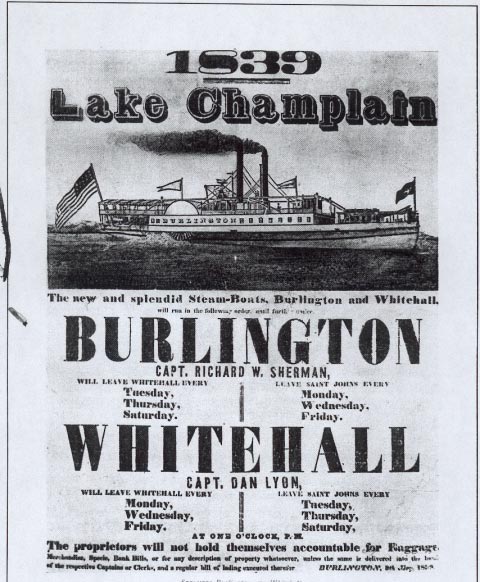The Reverend Abel Brown
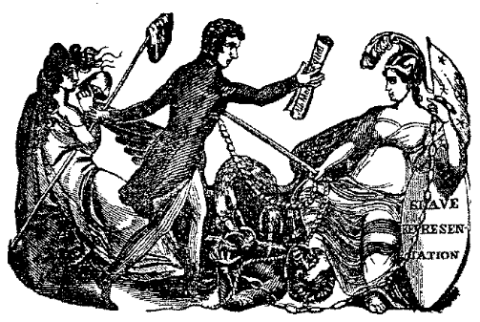
Abel Brown challenges slavery
In the 1840s, there was another very important UGRR agent in Albany. His name was Abel Brown. An ordained minister, Brown was the Corresponding Secretary of the Eastern New York Anti-Slavery Society. In May of 1843, the society's Executive Committee announced that over five hundred fugitive slaves had been aided during the previous year. Jeremiah Boggs from Virginia was sent to St. Albans, Vermont. He was doing well, working for an abolitionist and learning how to read. Then he was recognized by someone who knew his master. Boggs decided to go to Liberia, a colony in West Africa which had been established by the American Colonization Society. (See Western Vermont.)
In the fall of 1843, Rev. Brown reported:
"FUGITIVES. 'The cry is still they come.'—Two, yesterday morning, and two this morning...Will our friends send in funds to the Treasurer of the Eastern New York Anti-Slavery Society, to defray the expense of forwarding them on? Money! money! friends. The two fugitives last mentioned, we are informed, were followed to New York by their master—both master and slaves arriving at the same time—he on one boat and they on another. Happily, some colored hands on one of our North River towboats secreted them on board, and they arrived in this city in safety this morning."
The abolitionist journalist Charles Torrey went to Washington D.C. to operate an UGRR route to the Capital Region. Torrey worked with Thomas Smallwood, a free black man. But helping fugitive slaves was a dangerous business, and Smallwood had to flee to Canada.
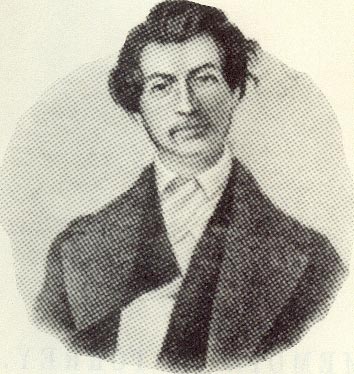
UGRR Conductor Charles Turner Torrey
In 1842, Torrey drove fifteen men, women and children in a wagon to Troy and put them on a canal boat for Canada. Torrey helped one man who chose not go to Canada. The man was a fugitive from Maryland, and his name was Lewis Washington.
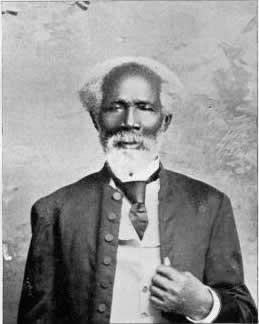
Lewis Washington
Abel Brown hid Lewis until all danger of his being captured had passed. Then Lewis joined Abel on his anti-slavery lecture tours. Audiences were moved by Lewis' stories of the four decades he had spent in slavery.
When the two men visited Massachusetts in the winter of 1842, Abel, a widower, took special notice of Catherine Swan, a young female abolitionist.
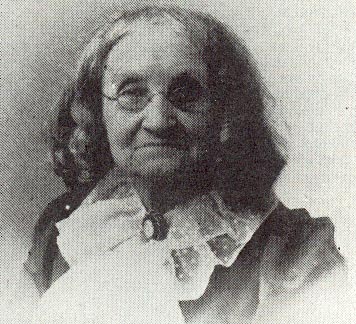
Catherine Swan Brown Spear
It was not long before Abel and Catharine were married by New York City UGRR stationmaster Rev. Charles B. Ray. Catherine joined her husband on the lecture circuit and sang anti-slavery songs. They traveled 3,000 miles in 18 months.
Abel Brown's influence reached beyond Albany. In October of 1843, he visited Clinton County. He lectured twice in Chazy, and was taken by Noadiah Moore to his "hospitable mansion" in Champlain. Moore's home was the last safe house on a route which began in Albany and passed through Troy, Glens Falls, Keeseville and Peru. (See Clinton County) After giving two lectures in Champlain and one in Moresville (Mooers), Brown took a steamboat from Plattsburgh for St. Albans, Vermont, where he lectured twice. He then took a steamboat to Whitehall and boarded a canal packet boat for Albany.
On January 31, 1844, an announcement appeared in the Essex County Times. Abel Brown would be in Elizabethtown for a two-day county convention beginning February 13th. Lewis Washington would also address the convention. The announcement continued, "The committee expect a hearty response from those who will not barter in the price of blood. Our enemies are strong—our cause is just. Freemen! to the rescue!!"
In July, Brown returned to the Adirondacks and wrote this gleeful message to his wife:
We took the Steamboat Burlington, commanded by Capt. Sherman, —and, permit me to say, that if you wish to see the most perfect specimen of a steamboat and a steamboats commander, be sure to take passage on the Burlington.... Many a slave has enjoyed the indescribable pleasure of leaping from the liberty-loving "Burlington," to feel the pleasure of being free under the protection of a Queen whose pleasure it is to make the lowest of her subjects happy.
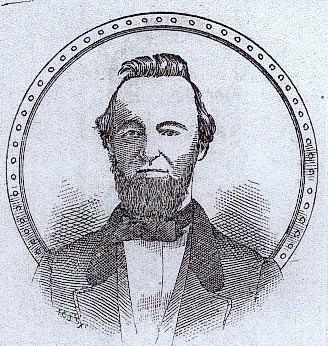
Captain Richard Sherman
Richard W. Sherman, familiarly known as "Captain Dick Sherman," gained the reputation of being the "ideal" steamboat captain. Although he commanded a number of steamers during his career, he secured his reputation with the Burlington, which had the distinction of being the finest and most efficiently commanded steamer on Lake Champlain. Sherman "conducted his boat very much as a gentleman would conduct his private yacht or establishment, seating his passengers at the table and seeing to their wants."
On August 13, 1844, an announcement appeared in the Plattsburgh Republican for a second Abel Brown tour. This one would be grueling—10 lectures in 12 days. It was hoped that Mrs. Brown would be able to attend and share her "unaffected vocal powers. If not, the native eloquence of Louis Washington" would "go far to compensate for the want of music. A colored man would accompany Mr. Brown in any event." The first stop would be at the Quaker Union, where Samuel Keese was the head of the UGRR depot. Their tour would also include a stop in the village of Champlain, where Noadiah Moore sheltered fugitive slaves rushed to him in a wagon pulled by Samuel Keese's fastest horses. Moore took the freedom-seekers across the border to Lacolle, where he owned mills and was able to help them find work. It is likely that some of the freedom-seekers Keese and Moore assisted were forwarded to them from Albany by Abel Brown.
The winter of 1844 was setting in when Brown traveled to western N.Y. for an anti-slavery convention. A terrible snow storm came up, and he stopped at a house to ask if he could stay the night and complete his journey in the morning. The request fell on unsympathetic ears. Brown was forced to continue on to Canandaigua. He was exhausted when he arrived, and a tormenting fever soon took his life. The "Colored citizens" of Canandaigua expressed their "deep and pungent grief."
Abel Brown was only 34 years old when he died. His bereft widow, Catherine, was expecting a baby. She lovingly compiled and published his memoirs with the hope that they would provide a source of income for herself and her unborn child. Catherine would give birth to a son and name him Abel.
Catharine Swan Brown recounted an "extremely interesting" case of a fugitive named William who was forwarded to Albany from New York City by Charles B. Ray in "care of Mr. Abel Brown." William arrived one morning during her husband's absence, and during the three days she cared for him, "he was constantly in dread of being taken by his pursuers!" She grew protective of William and wanted him to stay in Albany, but Mr. Brown had found a place for him near Lake Champlain, where he was "immediately conveyed."
After Abel's death, Catharine dedicated herself to a different cause. She married the "Prisoner's Friend," Charles Spear. She made his mission her own, but she never forgot the day she met Abel Brown. That was the day she was told Brown was a second Moses who had helped "a thousand slaves" to freedom.
Two years after Abel Brown died in western New York, Charles Torrey died in a Maryland penitentiary. Sentenced to a six-year prison term for aiding fugitive slaves with no hope of a pardon, Torrey succumbed to pulmonary tuberculosis at the age of 33. In his brief life, he had helped 400 fugitives escape from slavery.
Lewis Washington moved to Peterboro, New York, where he accepted a parcel of land from the wealthy abolitionist, Gerrit Smith. He then moved his family to Wisconsin where he lectured on behalf of the Liberty Party before settling on a farm. Finally, he moved to Omaha, Nebraska.
Sources:
Burlington and Washington Steamboat Broadside. Ralph Nading Hill, Lake Champlain: Key to Liberty (Woodstock, Vermont: The Countryman Press, 2004).
Catherine S. Brown, Abel Brown, Abolitionist. ed. by Tom Calarco ( Jefferson: McFarland & Company, Inc., 2004).
C.S. Brown, Memoir of Rev. Abel Brown (Worchester: Published by the Author, 1849)
Essex County Times, Jan. 31, 1844
Florence T. Ray, Sketch of the Life of Rev. Charles B. Ray. (New York: Press of J.J. Little & Co, 1887).
"Fugitives." Emancipator, Sept. 29, 1843.
Image of Lewis Washington. Google Book Search, Chauncey C. Olin, "Lewis Washington" pp. XLII-LII in: "Reminiscences of the Busy Life of Chauncey C. Olin" in: A Complete Record of the John Olin Family ... (Indianapolis: Baker-Randolph Co., 1893), 3 March 2009 https://www.wisconsinhistory.org/turningpoints/search.asp?id=1557
Sketches of the Burlington and Captain Sherman. Annual for the Year 1892 The Essex County Republican, With sketches and portraits of noted men and women of the Champlain Valley and Adirondacks. Second Series. With Compliments of W. Lansing & Son.

